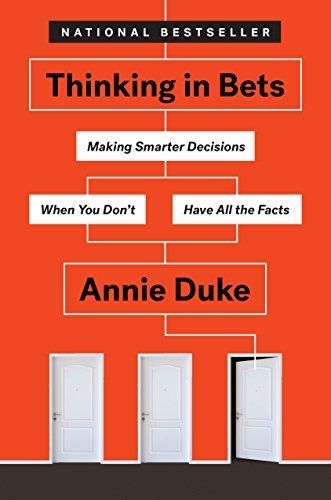
Thinking in Bets Making Smarter Decisions when You Don't Have All the Facts
Even the best decision doesn't yield the best outcome every time: there's always an element of luck that you can't control, and there is always information that is hidden from view. Duke shows readers how to think in bets: How sure am I? What are the possible ways things could turn out? As a former World Series of Poker champion turned business consultant, she draws on examples from business, sports, politics, and (of course) poker to share tools anyone can use to embrace uncertainty and make better decisions.
Reviews
Heiki Riesenkampf@hrk
Morgan Holland@morgz
Danté@dantenel
Wojciech Waśniewski@Wojciech
Ugis@vilcans
Omar@omareduardo
Luke Kanies@lak
Ivaylo Durmonski@durmonski
Carla Chen @carlachen
Erik Horton@erikhorton
Matt Moore@mcm
Anton Sten@antonsten
Gonia Cholewa@coconuthooves
Fred Rivett@fredrivett
Zane Shannon@zcs
Ethan Ding@ethanding
Felix Schröder@fesch
Jack Baty@jackbaty
Clive@clivereads
Pierre@pst
Jb@jbr1992
Rob@robcesq
Jaiden Ratti@jaiden
Stefan Ladstätter-Thaa@stefan786